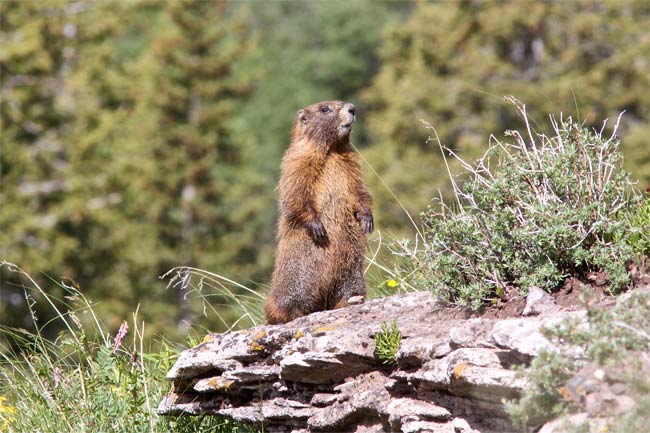Marmot Baby Boom Caused by Climate Change

While many species are being walloped by climate change, rising temperatures seem to be temporarily helping out yellow-bellied marmots, which have recently become bigger and fitter, a new study finds.
Yet climate change isn't good news for the marmots either, in the long term, because soon the higher temperatures expected will reduce their available food, scientists warn, and that is expected in turn curtail their numbers.
Packing on the pounds
In a new study, researchers tracked a population of yellow-bellied marmots (Marmota flaviventris) in the Upper East River Valley region of Colorado over a period of 33 years.
They found that climate change is having a significant effect on these rodents. Particularly, warmer temperatures in recent years have increased the overall growing season. Mother marmots are able to wean their young earlier, and as a consequence, these babies have more time to get big and fat before hibernation season begins.
During the first half of that the 33-year time span, the average adult female weighed about 6.8 pounds (3,100 grams). During the second half of the stint, the average weight increased to 7.5 pounds (3,400 grams).
"For that small size, it's quite a big increase," said study leader Arpat Ozgul of Imperial College London.
Get the world’s most fascinating discoveries delivered straight to your inbox.
The weight gain made the marmots stronger and allowed them to survive longer and reproduce more. That resulted in a larger population size.
Overall, the total number of marmots living in the area of study increased from fewer than 50 to more than 150 from 1976 to 2009.
Ozgul and colleagues detailed these findings in the July 22 issue of the journal Nature.
Window of opportunity
The marmot baby boom probably won't last, though, the researchers said.
While a slight increase in temperatures may be beneficial in some ways, climate change will likely go too far for these rodents, which have evolved over time to fit their high-altitude environment in Western North America.
"These animals are very well adapted to cold and moist environments, and they have very limited capacity to tolerate heat stress," Ozgul told LiveScience. "They are really dependent on moist vegetation."
The herbivore marmots subsist primarily on moist leafy greens. The higher temperatures and more frequent summer droughts predicted by climate change could reduce the amount of this food available.
"What we are seeing at the moment, I think, is that they are enjoying a luxury, enjoying a window where the growing season increases but there's still enough moist vegetation for them," Ozgul said. "But if the summer droughts start affecting the food resources then we will start to see a negative response."
And ultimately, any significant change on marmots could have domino-like effects on other species – both plant and animal – in their environment. For example, larger numbers of marmots may reduce levels of their favorite foods. It could also give marmots' predators a boost.
"Ecological systems are very interconnected and a change in one parameter affects several other parameters in the environment too," Ozgul said. "What we see here is the balance of the system has changed a bit and the next couple years will show where it will settle."
This study could help future efforts to map out the complicated consequences of climate change.
"The major challenge in climate-change ecology is to predict the impact of future climate change on populations," Marcel Visser of the Netherlands Institute of Ecology, wrote in an accompanying essay in the same issue of Nature. Visser was not involved in the new study. "The study on marmots emphasizes again that this challenge needs to be tackled with mechanistic population models that incorporate ecological and evolutionary processes
- Top 10 Species You Can Kiss Goodbye
- 8 of the World's Most Endangered Places
- Top 10 Surprising Results of Global Warming



